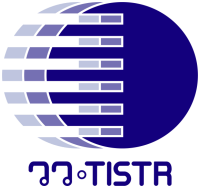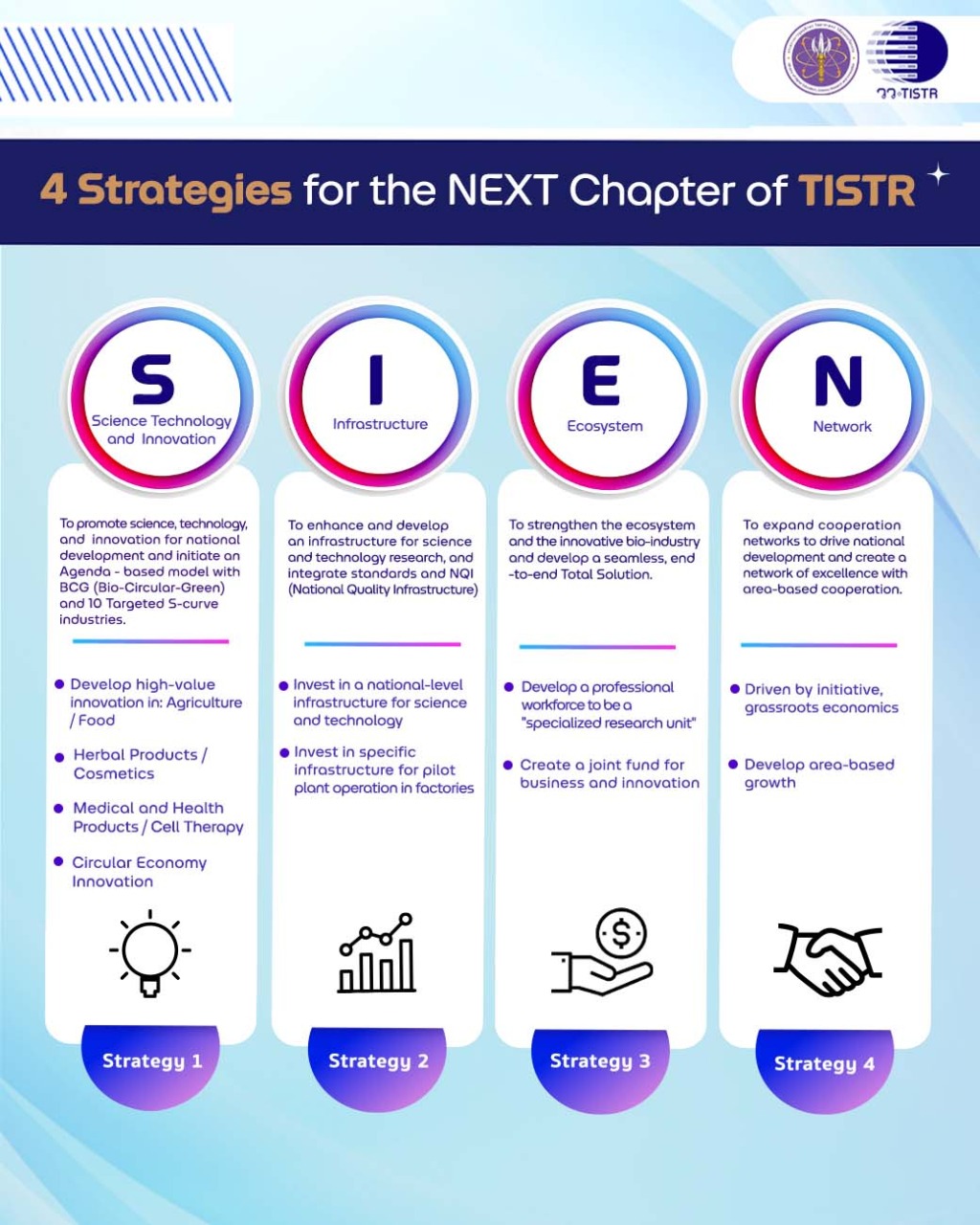Thailand Institute of Scientific and Technological Research (TISTR)

TISTR is a state enterprise and a leading public research organization under the Ministry of Higher Education, Science, Research, and Innovation (MHESI).
Founded in 1963, TISTR plays a key role in promoting science, technology, and innovation to support national development, especially in enhancing the competitiveness of Thai industries and improving the quality of life.
TISTR operates through a wide range of research and development (R&D) services, technology transfer programs, and innovation support mechanisms. These include pilot plants, testing laboratories, certification services, and consultancy for both public and private sectors. TISTR also supports SMEs and startups by providing access to scientific infrastructure, technical expertise, and innovation platforms.
With a strong focus on sustainability, TISTR integrates ESG principles into its operations—advancing clean technology, bio-based industries, and circular economy models. Its work spans across key sectors such as food and agriculture, energy, environment, health, and materials science.
Vision
Strengthening SMEs and communities through an innovation, science, and technology ecosystem for sustainability
Mission
TISTR works to achieve its vision through four key missions:
- To conduct research, development, and integration of science, technology, and innovation for the creation of a value-added economy based on biodiversity to increase national competitiveness and development sustainably.
- To transfer technology and innovation to the industrial sector and community enterprises for the maximum utilization of economic, social, and environmental aspects.
- To provide services in analysis, testing, calibration, quality system certification, training, and consultancy in order to leverage standards and competitiveness of the industrial sector.
- To develop an organizational management system to be a high-performance, modern, and good governance organization.

4 Strategies for the NEXT Chapter of TISTR
S-I-E-N
S: Science, Technology, and Innovation
To promote science, technology, and innovation for national development and initiate an Agenda-based model with 4 BCG (Bio-Circular-Green) and 10 Targeted S-curve industries.
- Develop high-value innovation in:
- Agriculture / Food
- Herbal Products / Cosmetics
- Medical and Health Products / Cell Therapy
- Circular Economy Innovation
- Automation Technology
I: Infrastructure
To enhance and develop an infrastructure for science and technology research, and integrate standards and NQI (National Quality Infrastructure)
- Invest in a national-level infrastructure for science and technology.
- Invest in specific infrastructure for pilot plant operation in factories.
E: Ecosystem
To strengthen the ecosystem and the innovative bio-industry and develop a seamless, end-to-end Total Solution.
- Develop a professional workforce to be a “specialized research unit.”
- Create a joint fund for business and innovation.
N: Network
To expand cooperation networks to drive national development and create a network of excellence with area-based cooperation.
- Driven by initiative, grassroots economics.
- Develop area-based growth.


